Moghadam Museum | Fabulous Art Collections
Amidst the constant updates and modernization in the world, finding a historic house museum in many cities is very rare.
In Tehran, you will be lucky to discover the Moghadam House Museum which is a monument from the Qajar era and belongs to one of the founders of Tehran Art University and his French wife. The museum complex consists of the house itself and a beautiful garden, safely hidden from street noise behind thick walls.
Moghadam Museum exhibits a fabulous art collection from Prof. Moghadam and his wife. You can find valuable crafts, historical objects, carved stone pieces, magnificent tiles, pottery, glass, paintings, coins, and some old documents in this museum. Follow us to learn more about this historic house including its history, architecture, ticket price, opening hours, location, and how to get there.
Interested in visiting Moghadam Museum?
Check out our Tehran tour packages to find an itinerary that includes visiting the museum
or...
Design your own tailor-made itinerary and include Moghadam Museum in it by yourself, today!
Who is Mohsen Moghaddam?
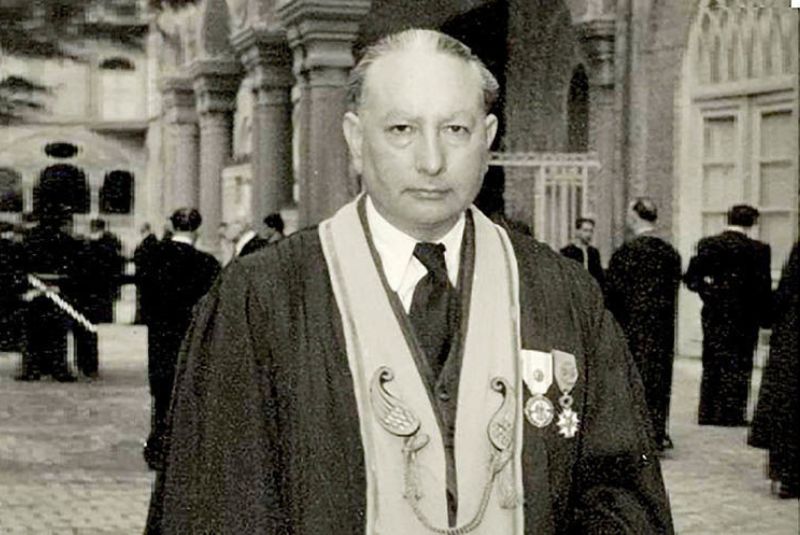
Mohsen Moghaddam is a prominent figure in the art and academic community in Iran. He played a pivotal role as one of the founders of the Faculty of Fine Arts at the University of Tehran, where he also served as a distinguished professor. Notably, he designed the University of Tehran insignia, drawing inspiration from Iran's ancient history and rich culture.
Moghaddam's contributions were recognized internationally when he became the first Iranian to receive the prestigious Legion of Lights, bestowed upon him by French President Charles de Gaulle, with the rank of "Ufisiyeh."
In 1972, driven by his passion for science, history, and art, Moghaddam dedicated his father's house, along with his remarkable collection of artworks, to the University of Tehran. Following his departure in 1987 and the subsequent passing of his wife in 1990, the trusteeship of the Moghadam Museum was officially entrusted to the University of Tehran.
| Related: Best Museums in Tehran
The History of Moghadam Museum
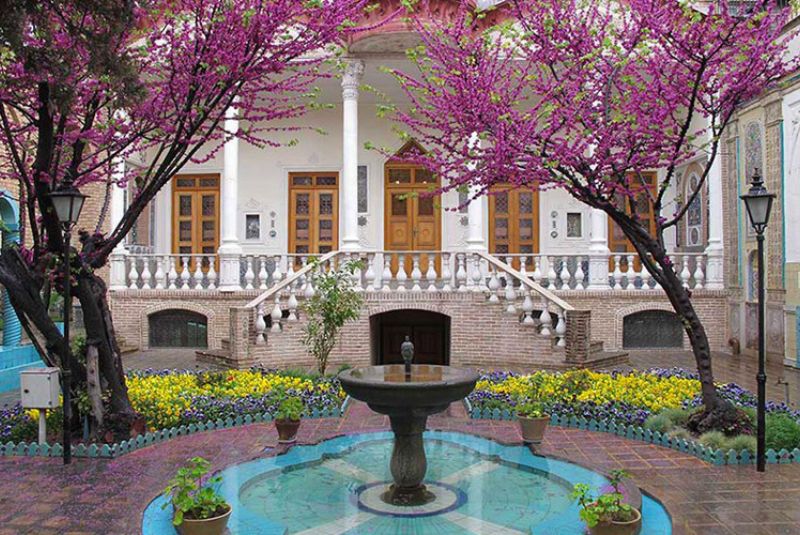
The history of the Moghadam Museum is deeply intertwined with the life and passions of its founder, Mohsen Moghaddam. It was originally owned by Mohammad Taghi Khan Ehtesab-ol-Molk, a Qajar courtier. The house became the residence of Mohsen Moghaddam and his wife, Salma, upon their return from Europe in 1917.
Both Mohsen and Salma shared a fervent interest in collecting and preserving historical and artistic artifacts. The house was adorned with splendid works such as tiles and carved stones, showcasing their dedication to beautifying the Moghadam House. In addition, they amassed an impressive collection of textiles, moskukats, seals, pipes, vases, pottery, glass, and paintings, transforming their family home into a treasure trove of historical and cultural significance.
Mohsen Moghaddam is a distinguished professor and one of the founders of the Faculty of Fine Arts at the University of Tehran. He decided to dedicate the house to the university in 1972. However, after Mohsen's passing in 1987, his wife took on the responsibility of the house. Unfortunately, only three years later, she also passed away, leading to the complete transfer of the house's stewardship to the University of Tehran.
| Also read about: Saba Home Museum - Iran's Melodic Echoes
The Architecture of Moghadam Museum
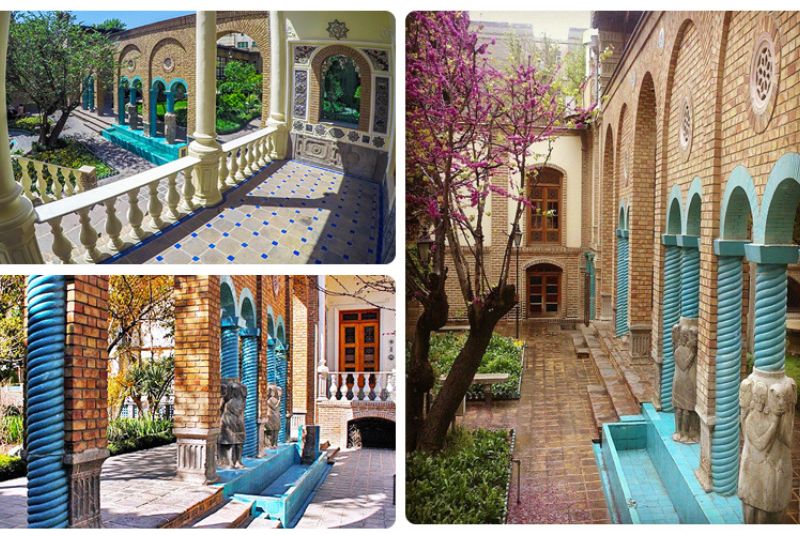
The architecture of the Moghaddam Museum beautifully showcases the principles of Iranian construction, particularly those found in Iranian gardens. The presence of flourishing plants and flowers creates a delightful atmosphere for visitors.
One notable structure within the museum is the Arbabi building, also known as the Tower, constructed by Mohsen Moghaddam and one of his students from the Faculty of Fine Arts, Dr. Abolghasemi, in 1966. The museum is adorned with tiles from the Qajar era and various elements of Iranian art.
Moving towards the northern section of the museum, a porch with elegant arches and columns, embellished with tiles from the Zand and Qajar era, catches the eye. At its center, a marble pond, originally from Fath Ali Shah's bath, releases water through a narrow stream, eventually pouring into a pool. This pool was inspired by Moghaddam's visit to Spain, where he studied and modeled the pool and fountains of the Alhambra Garden. Surrounding the pool, several old fountains also contribute to its beauty.
The inner and outer courtyards are separated by a modernization wall, comprised of tiled arches supported by columns. These columns, reminiscent of those found in Chehelsotoun Palace, were relocated from Naser al-Din Shah's sister palace, creating a stunning display with their turquoise color. The design and construction of this remarkable wall were entrusted to Master Houshang Seyhoun.
| Also read about: Top 23 Museums in Iran + Photos
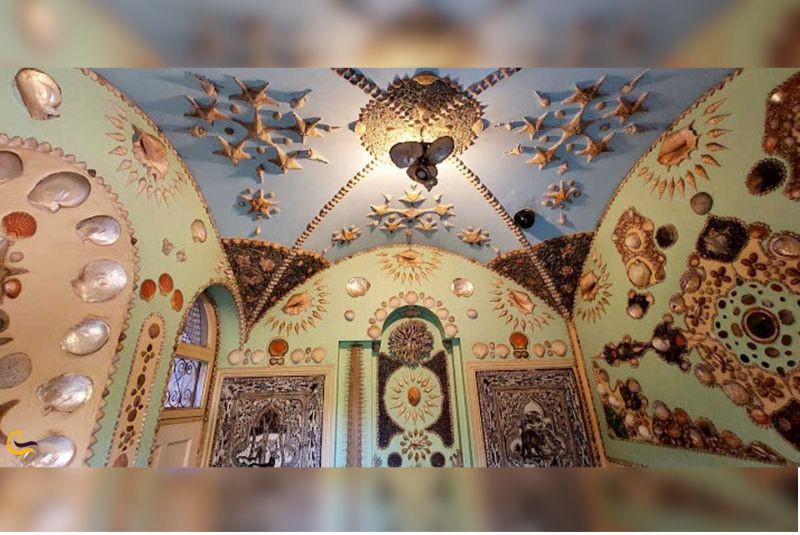
Within the northern part of the inner courtyard lies a captivating porch, featuring four columns adorned with kinetic plasterwork. Mohsen Moghaddam meticulously decorated this porch, ensuring its aesthetic appeal. Accessible through two spiral staircases, the large porch offers a splendid view.
The inner courtyard is inspired by Persian carpet designs. A beautiful pool and fountain grace its center, surrounded by carefully arranged flowers. Mohsen Moghaddam embellished the courtyard wall with tiles and containers, and in the middle, constructed a magnificent arch adorned with blue tiles.
While the architecture predominantly reflects Iranian influences, the construction of the house also incorporates elements from other countries. For instance, Mohsen Moghaddam and his wife created a Japanese garden in the outer courtyard, showcasing their appreciation for diverse architectural styles.
| Discover: Cinema Museum of Iran in Ferdows Garden, Tehran
Different Sections of Moghadam Museum in Tehran
The Moghaddam Museum in Tehran is a vast house covering an area of over 2000 square meters. It is divided into many sections. Each section of the museum offers unique features and attractions, providing visitors with a diverse and enriching experience. Let's explore the different sections of the Moghaddam Museum.
Exterior Section
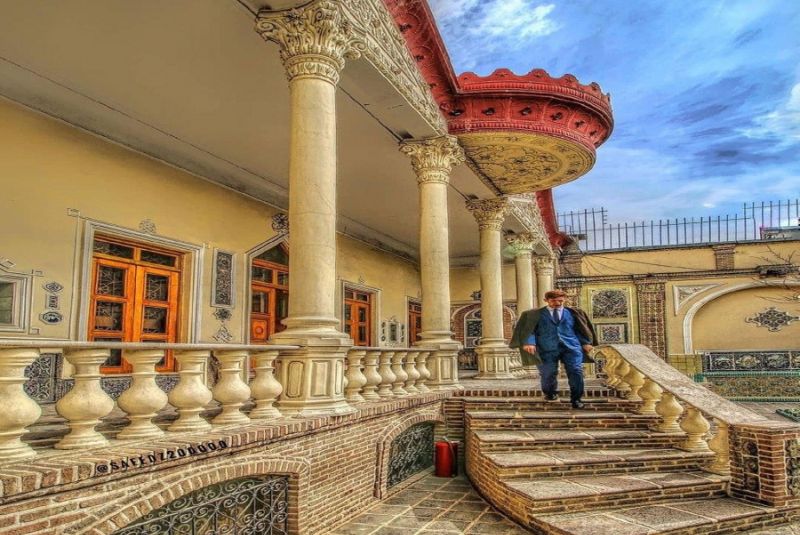
The exterior section of the Moghaddam Museum encompasses the southern side of the house. It includes the following areas:
- Exterior or Summer Building: This building was primarily used during hot seasons. It features a living room or reception area with simpler plaster decorations on the ceiling compared to other parts of the house. The room served various purposes, such as guest reception, scientific activities, and work. Today, visitors can admire a collection of pottery works, stone artifacts, and metal tools personally collected by Dr. Moghaddam. Additionally, the counter room showcases wooden chests with intricate wooden decorations and personal belongings of Ostad Moqaddam.
- Pond House: Located below the reception hall, the Pond House is one of the oldest parts of the house, dating back to the Mozaffari period. It features a pool and is known for its beautiful tiles.
- Library: Adjacent to the reception hall, the library houses Dr. Moghaddam's book collection. It also served as a small workshop for the master and art enthusiasts. The books in this section are open to the general public.
| Discover: Tehran's Most Famous Palaces
Western Section
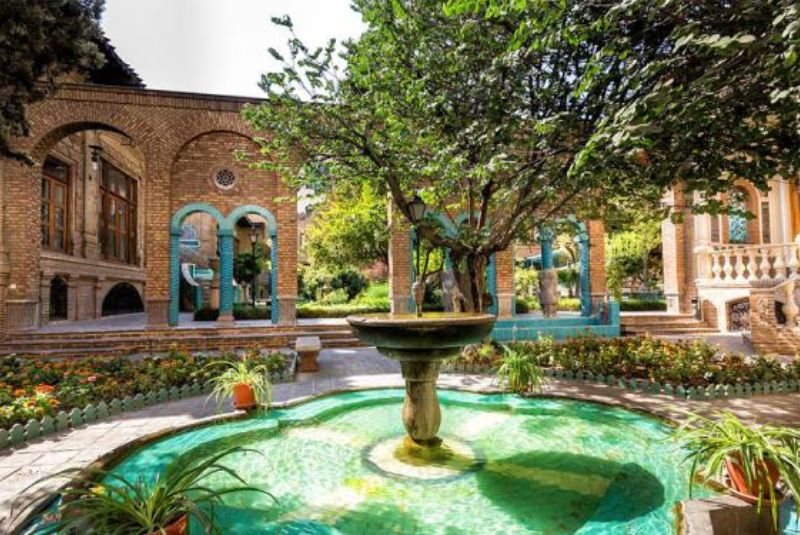
The western section of the Moghaddam Museum is situated on the exterior side of the house. It includes the following areas:
- Tower or Master Building: This modern part of the museum, built 54 years ago, resembles a tower and exhibits European architectural influences. It was constructed by Professor Mohsen Moghaddam and one of his students, inspired by his wife's French origin. Inside the tower, visitors can explore the Kadkhoda room, a bathroom adorned with beautiful tiles, as well as rooms dedicated to Dervish and Smoking, which display their belongings and old equipment.
- Sadaf (Oyster) Room: This room, accessible from outside the tower building, showcases precious and exquisite works personally collected by Professor Mohsen Moghaddam. The name "Sadaf" refers to the pearls within oysters, emphasizing the value of the displayed items.
- Qajar Ivan: Adjacent to the master building, the Qajar Ivan features brick arches, stone columns, and skillfully decorated tiles from the Zand and Qajar eras. A reflective pool in front of the porch enhances its beauty, accompanied by vases of geraniums and fountains.
Northern Section
The northern section of the Moghaddam Museum is located on the exterior side of the house. It comprises the following areas:
- Greenhouse: This section is dedicated to the cultivation of ornamental flowers, showcasing beautiful and colorful tiles on its exterior.
- Terrace: Accessible via small steps from the main courtyard level, the terrace serves as a café for visitors, providing a relaxing space.
- Wall of Modernity: A striking wall with turquoise-colored spiral columns separates the inner and outer courtyards. It was constructed by Engineer Houshang Seyhoun, incorporating columns from Nasser al-Din Shah's sister's palace, adding historical and aesthetic value to the museum.
Interior Section
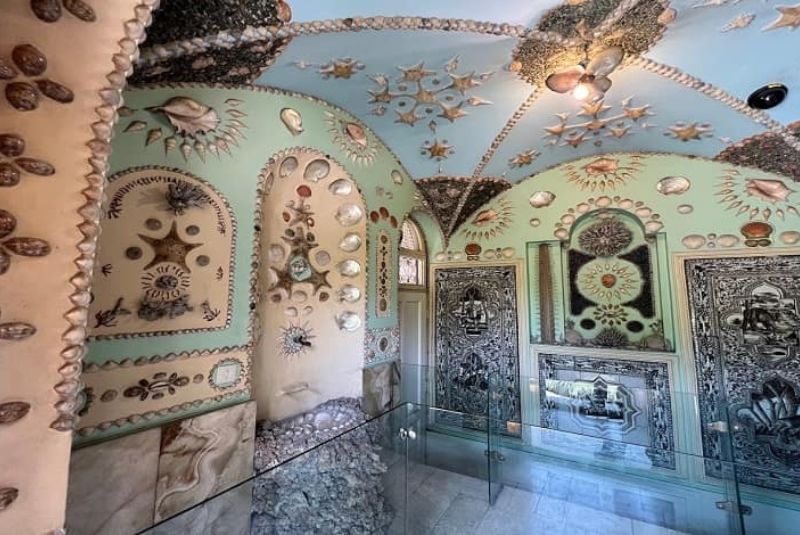
The interior section of the Moghaddam Museum refers to the northern side of the house, traditionally designated for women, children, and servants. It includes:
- Basement: Originally used for bathrooms and storage, the basement now serves as an exhibition space for monuments, preserving historical artifacts.
- Ivan: The Ivan is a remarkable section connected to the upper floor by two staircases. It features mirrors from the Zand and Qajar eras, mosaic and clay tiles from the Qajar and Pahlavi periods, and intricate plasterwork, showcasing the artistic craftsmanship of different eras.
- Eastern Section: This part of the interior courtyard features a floor designed to resemble the map of Persian carpets, reflecting the owners' appreciation for Iranian art.
Caretaker's Section
The caretaker's section, formerly the residence of servants and the kitchen, now serves as the administrative area of the museum, managing the day-to-day operations and preserving the cultural heritage within the Moghaddam Museum.
Moghadam Museum Ticket Price
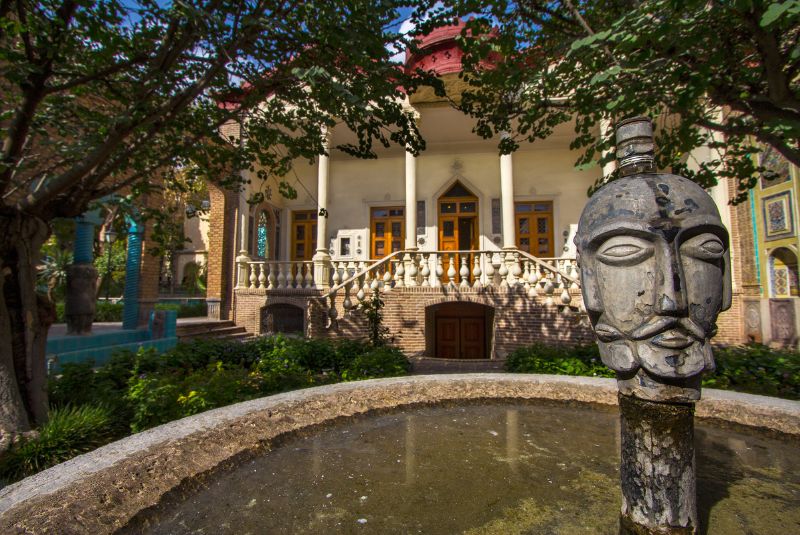
The ticket prices for the Moghaddam Museum are as follows: For domestic tourists, the ticket price is 30,000 tomans, while for foreign tourists, it is 200,000 tomans. To avail of discounts, students can present their student cards.
Moghadam Museum Opening Hours
Moghadam Museum is open every day except Saturdays, from 9:00 to 16:30.
Moghadam Museum Location
Moghadam Museum House and Museum is located in the historical context of Tehran. It is located on Imam Khomeini Street, after Sheikh Hadi Street, next to Mellat Bank.
How to Get to Moghadam Museum
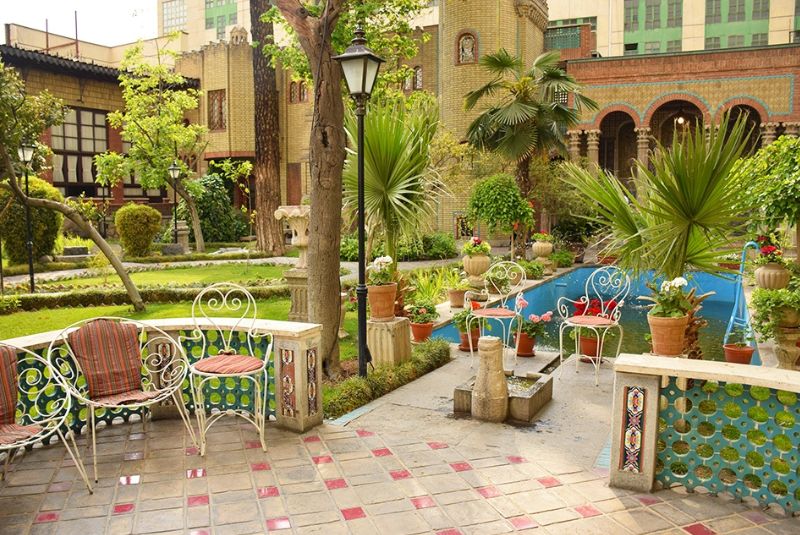
Getting to the Moghaddam Museum in Tehran is convenient and accessible through various modes of transportation. Here's a guide on how to reach the museum:
By Bus
If you prefer public transportation, you can take advantage of the Bus Rapid Transit (BRT). The Alborz BRT stop is just a short 3-minute walk away from the museum. To reach the museum, hop on BRT line #7 from any point along Vali Asr Street.
By Metro
For metro users, the closest station to the Moghaddam Museum is Hassan Abad. This station is on the dark blue metro line and can be reached within a comfortable 6-minute walk. If you are on the light blue line, you can get off at Moniriyeh station and enjoy a pleasant 10-minute walk to the museum.
On Foot
If you are already in the vicinity of Vali Asr Street, the National Museum of Iran, Golestan Palace, or Sardar-e Bagh-i Melli, you have the option to explore the area on foot. Moghaddam Museum is conveniently located near these attractions, so you can take a leisurely walk towards the museum and enjoy the surrounding sights along the way.
Bottom Line
The Moghaddam House Museum is a magnificent monument from the Qajar era, founded by one of the pioneers of Tehran Art University and his French wife. The museum offers a rare glimpse into their lives and offers visitors are a remarkable collection of valuable crafts and historical artifacts including pottery, paintings, carved stone pieces, magnificent tiles, glass, coins, and some old documents.
Share your story!
Comment below and let us know about your Experience.
Your story inspires others!


Comment
Leave a Comment